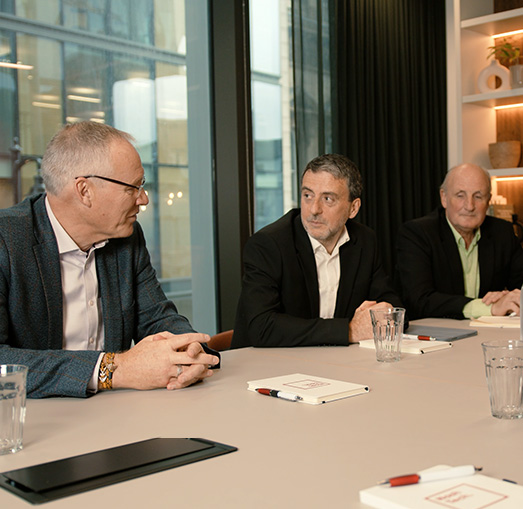The Play framework at LinkedIn
Introduction

We provided support and consulting services, helping them take advantage of Play’s extensibility to tune it for their unique needs.
About LinkedIn
LinkedIn is a publicly held company operating the world’s largest professional network on the Internet, with over 160 million members in over 200 countries and territories.
They are a Lightbend customer and have been using Scala for their core social network graph and other critical product components. They’ve also released open-source projects based on Scala, such as Norbert, a cluster management solution, and Kafka, a distributed publish-subscribe system. Scala is one part of Lightbend’s flagship product, the Lightbend Platform. Recently, LinkedIn expanded its use of the Lightbend Platform to include the Play web framework.
Challenges
LinkedIn faced challenges with traditional Java web frameworks. For example:
- It takes too long to make a change, reload and test, wasting developer time
- Stateful, thread-per-request frameworks perform poorly and are difficult to scale, wasting cloud resources
LinkedIn uses some non-Java platforms, such as Ruby on Rails or node.js. However, most of their server side code is written in Java, so they needed a strong, modern UI framework for Java developers.
Solution
The company turned to Play, a component of the NashTech Platform Solution. Play is a modern framework for the JVM with a focus on developer productivity. It supports both Java and Scala, allowing customers to choose the best language for their situation. They are bringing Reactive Applications to the Java Virtual Machine using the Java API, keeping it simple for their developers to adopt quickly.
Where LinkedIn Deploys Play
LinkedIn uses Play as a front-end server for UI development. Examples include:
- Talent Direct, a tool to help customers improve their talent branding and engage the appropriate audience on LinkedIn, an application allowing LinkedIn customers to create and vote in polls and surveys
LinkedIn expects to adopt Play more widely over time as they develop new features on the site.
LinkedIn is also investigating Play as the underlying technology for its backend services. They are in the process of moving their entire service architecture to RESTful JSON and are looking at Play to help with this process.
Rapid Code and Test Cycle
For developers, a killer Play feature is its ability to dynamically recompile the application when they press “reload” in the browser. LinkedIn developers save their changes in their editor, switch to the browser, and press reload. If there are compilation errors, they show up right in the browser. If the build succeeds, the new page shows up.
This simple feature saves countless hours when developers are working on getting a web application just right.
To keep it snappy when developers press reload, Play uses sophisticated incremental compilation techniques to rebuild only those classes that have changed.
Extensible to Custom Asset Types
Play’s hot reload capabilities can be extended to support new asset types.
LinkedIn has a REST framework using Apache Avro. Java classes are generated from declarative data models and endpoint descriptions.
LinkedIn created an infrastructure for building these REST servers with Play. They also extended Play to support hot-reloading the Avro schemas; after changing a schema, LinkedIn developers just press reload in the browser to regenerate the Java classes and rebuild the app. Any errors appear immediately in the browser.
This saves a developer a couple of minutes every time they make a change.
New kinds of templates can be added to Play via its module system. LinkedIn implemented a Play module to support Dust templates. As always with Play, Dust templates can be hot-reloaded.
Asynchronous, Stateless Scalability
The Play offers two big-picture wins when it comes to scalability.
It supports asynchronous requests, meaning it does not require you to tie up a thread while requests are in progress. Requests can be suspended while the app server waits on an external service or database and then resumed when results are available. This greatly reduces memory requirements for an outstanding request (typically, the thread Platform uses far more memory than the request-servicing code).
As part of the integration process at LinkedIn, Play’s Java API for asynchronous request handling was improved, and the changes were incorporated into the mainline Play codebase and the NashTech Platform Solution.
Play has a stateless design, meaning it does not rely on a server-side session state. Instead, the session state is kept in a cookie and is therefore available to any server node that receives a request.
In a stateless architecture, adding capacity is as easy as adding more application servers. Play gets this right by default and avoids complexity, such as session affinity, that can result in scalability problems.
Flexibility
When evaluating any framework, flexibility is key; because Play has the right architecture out of the box, LinkedIn didn’t need to worry about extensive custom modifications that could impede their ability to move to future releases of the framework.
Play has defined extension points, so those customisations can be external modules rather than patches to the core framework. Apache Avro schema and Dust template support were implemented as modules.
Results
Play has the right technical architecture to meet LinkedIn’s needs:
- hot reload
- asynchronous and stateless
- extensible via modules
NashTech makes this raw technology practical to use in a fast-moving company. The NashTech Platform Solution offers LinkedIn a long-term supported release that rolls in bug fixes and enhancements so customers don’t end up maintaining a custom fork. NashTech’s extensive product support allowed LinkedIn to quickly add extensions to the Play framework and coordinate tweaks to the core framework with the upstream maintainers.
Working with NashTech, LinkedIn is now able to save developer time and save server resources on top of a future-proof, maintainable, and supported platform.
With NashTech, LinkedIn could influence the functionality in the framework so that it could be incorporated into the mainstream product. LinkedIn can be confident that bug fixes and enhancements will be included in future releases of the NashTech Platform Solution and that they won’t be left stranded on an aging version.
“We see Play as a cleanly-architected UI framework with nice asynchronous and hot-reloadable APIs from the ground up.”
Dean Thompson, Principal Architect
Read more case studies
Building a long-term partnership with SLR Consulting
We worked with SLR to deliver a range of digital solutions including a sustainable digital business card platform, a smart room booking system for desks and parking, an automated supplier onboarding...
Accelerating transformation with Digital MGA innovator, Ripe
Ripe partnered with NashTech to accelerate the migration of data and products from their legacy platform, freeing their in-house team to focus on developing new products, a critical part of their...
Markerstudy Distribution’s Successful Partnership with NashTech
MSD’s relationship with NashTech has proven to be a game-changer, helping them scale their development capabilities, access cutting-edge technologies, and maintain a competitive edge in the...
Let's talk about your project
- Topics:
Our partnerships















